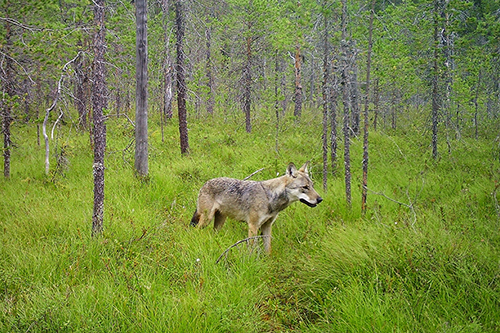The second Polar Limnologists Hands-on School is taking place on April 10-14 in the integrated monitoring polygon of the Kola Science Centre RAS situated 20 km away from Apatity, on the shore of Lake Imandra. It is co-organized by the Institute of North Industrial Ecology Problems of the Kola Science Center RAS and the Northern Water Problems Institute (NWPI) of the Karelian Research Centre RAS with support from the Project Office for Arctic Development (PORA).
The participants of the school are 19 young researchers from various Russian cities: Moscow, St. Petersburg, Murmansk, Apatity, Petrozavodsk, Miass (Chelyabinsk Region), Arkhangelsk, and Kaliningrad.
– Our goal is to get young people interested. Science needs new staff, bright-eyed professionals who are good at what they do. That is why the participants are mostly senior undergraduate, master's or graduate students. It may be that some of them are currently deciding on the direction to pursue in their future work, and we will be glad if we can help them, - said Alexey Tolstikov, one of the managers of the Polar Limnologists Hands-on School, Head of the Geography and Hydrology Laboratory at NWPI KarRC RAS.
The School's key topic is research of the different aspects of lakes in the winter-spring season. Leading scientists from the Karelian and Kola Science Centers RAS act as experts. The specialists give lectures on hydrology, hydrochemistry, geochemistry of bottom sediments, hydrobiology, ichthyology, hydrophysics and geophysical methods of lake research.
In addition to theoretical classes, the organizers put much emphasis on practice, which is held directly on the ice of Lake Imandra. The participants are familiarized with the methods of research of water bodies in the winter-spring period. They will see how the physical parameters of the water column are recorded by CTD sensors, how bottom sediments are studied by geophysical methods, how water samples are taken from different horizons, how hydrochemical characteristics of the environment are determined. In the laboratories of the research facility, specialists will demonstrate the process of preparing samples for studying planktonic and benthic organisms to the participants.
– The study of lakes, especially in the winter-spring period, is a "white spot" in every sense. Lakes in general have been poorly studied: only about two percent of lakes in Russia have been surveyed, i.e., their average depth, water volume, and processes therein are known. Winter surveys are technically complicated. Sometimes it is dangerous, often time- and energy consuming, so data on the winter regime of lakes is scarce, and such surveys require special skills. Having many years of experience doing such research, we can share our knowledge with our colleagues and, in turn, learn how they work, - Alexey Tolstikov added.
News

April 10, 2023
So far only about 2% of lakes in Russia have been studied. Attracting the youth to this branch of science and organizing the exchange of expertise between specialists in different fields is the mission of the Polar Limnologists Hands-on School, which has started in the Murmansk Region. During one week leading scientists from the Karelian and Kola scientific centers RAS will give lectures and practical classes for young researchers on the ice of Lake Imandra.
See also:

August 1, 2025
Scientists pin down a first finding of wolf-dog hybrids in the wild in Karelia
Genetic study of wolves taken down by hunters in Karelia shows hybrids from crossing between wild animals and dogs are appearing in the population. Scientists believe this may be driven by the hunting pressure – a survival strategy for the species. On the other hand, hybridization and inbreeding – crossings between close relatives – jeopardize the population in general. Meanwhile, wolves play a pivotal ecological role.
Genetic study of wolves taken down by hunters in Karelia shows hybrids from crossing between wild animals and dogs are appearing in the population. Scientists believe this may be driven by the hunting pressure – a survival strategy for the species. On the other hand, hybridization and inbreeding – crossings between close relatives – jeopardize the population in general. Meanwhile, wolves play a pivotal ecological role.



